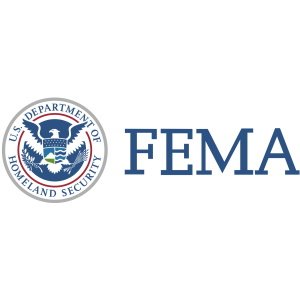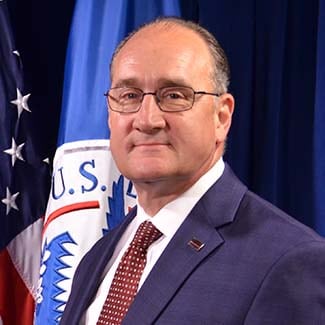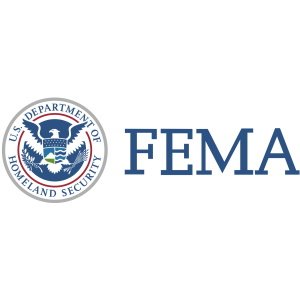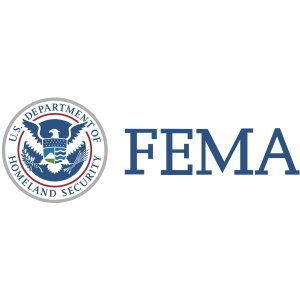Federal Emergency Management Agency (FEMA) - Experts & Thought Leaders
Latest Federal Emergency Management Agency (FEMA) news & announcements
When it comes to preventing the spread of any fire, a fire extinguisher is the first line of defense, either at home or in the workplace. The use of fire extinguishers is easy, but at the same time, it’s crucial to learn the proper, effective, and safe way to extinguish a fire. There are still some common mistakes that people make when using fire extinguishers and those mistakes should be avoided in the event of an emergency. Not Pulling the Extinguisher Pin Removing the safety pin from the fire extinguisher is vital before using the fire extinguisher Even with proper training in using fire extinguishers, it is usual to forget to pull or remove the safety pin in a moment of urgency to fight any fire. In any case, a person is unaware that fire extinguishers contain this pin or puzzled to pull the pin that will render the extinguisher useless even in the event of an emergency. Therefore, removing the safety pin from the fire extinguisher is vital before using the fire extinguisher to put out the blaze. Standing Way Too Close to the Fire One of the most common mistakes people make about the blaze is standing at the wrong distance when tackling a fire. If they are too far away from fire hazards, and operating then its discharge will be far too weak, and the fire may not go out. Likewise, if standing too close to the fire, people could potentially burn themselves or even help spread the fire. They should avoid such mistakes! Therefore, maintaining the correct distance between the fire extinguisher and the fire is one of the most important things to remember. According to the Federal Emergency Management Agency (FEMA), it is recommended to maintain a distance of approximately 8 ft. away from the blaze or the flames. Not Reading the Instructions Many people walk by fire extinguishers every day without reading the instructions printed right on them, and this is the most common mistake that everyone should avoid. Reading the instructions in the event of a fire is not at all a good idea, as it will use up valuable time, but also allow the small fire to grow. Therefore, it is advisable to take the time out as soon as possible to read over the instructions on the fire extinguisher, so people know exactly how to use it when facing any fire tragedy. There are various types of fire extinguishers available to tackling certain types of fire - every fire extinguisher will have on it detailed instructions citing the exact steps and precautions needed to tackle a fire effectively and safely.
Texas A&M Task Force 1 (TX-TF1) received a perfect score of 100 on its 2023 Federal Emergency Management Association (FEMA) Task Force Administration Readiness Evaluation (ARE) that was recently completed. This marks the first time that any of FEMA’s 28 Urban Search and Rescue (US&R) teams has earned a perfect score since the agency began the task force evaluations in 2010. The ARE is an evaluation that examines each team’s compliance in three areas: 1) Operational Readiness, which reviews personnel qualifications and the training regimen for the team; 2) Logistics Readiness, which ensures that each team has the required facilities, transportation, equipment and materials for deployment; and 3) Management Readiness, which verifies that the team is fulfilling the requirements of the FEMA US&R System Cooperative Agreement performance requirements in relation to staffing, reporting, financial processes, policies and procedures. US&R task force members TX-TF1’s in-person evaluation took place December 5-6, 2023, at its facilities in College Station All 28 teams submit a self-assessment annually, and every three years an assessment team consisting of FEMA staff and peer US&R task force members from other states conduct an in-person evaluation of each team over two days to ensure the self-assessments are accurate. TX-TF1’s in-person evaluation took place December 5-6, 2023, at its facilities in College Station. “All of our universities and agencies strive for straight A’s every day, but Texas A&M Task Force 1 outdid itself with its perfect score,” said Texas A&M University System Chancellor John Sharp. “I have the utmost respect for the team members who put their lives on the line to rescue their fellow Texans from fires, floods and other natural and human-caused disasters.” FEMA US&R Response System "To say that I am very proud of the Texas A&M Task Force 1 team would be an understatement,” said TEEX Agency Director David Coatney. “The level of commitment, capability, training, logistics and preparation by the team members have all resulted in the highest level of readiness and achievement by our team. This is an impactful accomplishment that will benefit the communities that we serve." The level of commitment, capability, training, logistics and preparation by the team members“On behalf of the FEMA US&R Branch, I want to congratulate all of the hard-working and dedicated personnel on TX-TF1 who helped achieve this excellent rating,” said Dean Scott, acting chief of the US&R Branch of FEMA’s Operations Division. “We appreciate the outstanding collaboration that the TX-TF1 administration provided throughout the evaluation process, as well as all of the contributions and support that TX-TF1 and TEEX have provided over the years to the FEMA US&R Response System.” Author's quote In addition to the TX-TF1 administrative staff, the team includes about 228 first responders from 134 participating agencies and organizations across the state, all of whom reside within three hours of College Station. “Personnel from fire and rescue departments, emergency medical and health services, and other emergency agencies and specialty companies across Texas have provided the experts to be part of TX-TF1,” said Jeff Saunders, TX-TF1 director. “They have full-time positions in their own organizations but are dedicated to mobilizing with TX-TF1 on a moment’s notice. Without them, this achievement would not be possible.”
The National Volunteer Fire Council (NVFC) has launched an online, searchable directory of behavioral health professionals ready and able to help firefighters, EMS providers, rescue workers, and their families. This new tool replaces the previous PDF directory and will make it easier for responders and their families to find the assistance they need. Emergency responders face unique challenges that can have a significant impact on their mental wellbeing, and it is important that they have access to providers that understand this. NVFC’s new Online Tool to connect responders The providers listed in this directory are behavioral health professionals vetted by FBHA The providers listed in this directory are behavioral health professionals vetted by the Firefighter Behavioral Health Alliance (FBHA) that either have firsthand experience with the fire and emergency services or have completed a training course through the FBHA to educate them on the fire service and the specific challenges responders face. In addition to licensed healthcare professionals, there are other resources for assistance such as chaplains and peer support specialists. Online tool Searchable using a wide range of criteria The new online tool is searchable using a wide range of criteria, including location, areas of expertise, accepted insurance, whether the provider is licensed, and whether the provider offers telehealth. This will enable those seeking assistance to identify the providers that are the best match for their needs. Over 220 providers from across the U.S. are currently included in the directory, and more are added each month. Access to the First Responder Helpline NVFC members and their household family also have access to the First Responder Helpline in a crisis moment and for assistance with behavioral health issues and work-life stresses. This includes counseling sessions, resources, and referrals for a variety of issues such as stress management, depression, family conflict, financial or legal concerns, substance misuse, child or elder care, and more. Many of these resources, including the directory of behavioral health professionals, are made possible thanks to a Fire Prevention and Safety Grant from the Federal Emergency Management Agency (FEMA).
Insights & Opinions from thought leaders at Federal Emergency Management Agency (FEMA)
Fire and EMS departments are eligible for reimbursement from the Federal Emergency Management Association (FEMA) of their costs, related to the COVID-19 pandemic. A streamlined project application process eases the burden of applying for the program, but support documentation is required. Tracking costs For COVID-19 recovery Many departments do not apply for the money because they perceive reporting requirements as too difficult, and record-keeping as too big a challenge. To help, the U.S. Fire Administration (USFA) provides simple Excel worksheets for tracking costs related to COVID-19 response and recovery. Customizable worksheets capture common reimbursable costs as they are spent. Departments seeking reimbursement should submit a project application online at the FEMA Public Assistance Grants Portal (no paper submissions are accepted). FEMA’s Public Assistance Program The mission of FEMA’s Public Assistance Program is to provide assistance to State, Local, Territorial, and Tribal governments The mission of FEMA’s Public Assistance Program is to provide assistance to State, Local, Territorial, and Tribal (SLTT) governments, and certain types of private nonprofit (PNP) organizations so that communities can respond quickly to and recover from major disasters or emergencies declared by the President. A submission request for public assistance must provide complete and accurate documentation of expenses and usage, including standardized Incident Command System (ICS) forms, Public Assistance Grant forms, verifiable receipts, personnel costs sheets and apparatus sheets. Applications submitted via jurisdiction serviced Applications are submitted through the jurisdiction serviced. Additional documents include supporting plans, assignments, activities and shift records (payroll), pay policy receipts for purchases and rental equipment, and a copy of the service agreement/contract with the jurisdiction. Some activities may be eligible for funding through both FEMA and other federal agency funding sources for COVID-19, including the U.S. Department of Health and Human Services’ Centers for Disease Control and Prevention (CDC) and Office of the Assistant Secretary for Preparedness and Response (ASPR). Public assistance cannot duplicate funding from another federal source. Public Assistance program Some activities may be completed through direct federal assistance. If an applicant does not have the capacity to directly complete the activity or oversee activity completion through contract or mutual aid, the Applicant may request that FEMA or another federal agency directly conduct the activity. The assistance FEMA provides through its Public Assistance program is subject to a cost share, with the federal share not less than 75% of eligible costs.
The third stimulus package passed by Congress and signed into law by President Trump on March 27 includes funding earmarked to help fire and EMS services deal with the burgeoning coronavirus emergency. The Coronavirus Aid, Relief and Economic Security (CARES) Act provides $2.2 trillion in all to help the nation deal with the COVID-19 pandemic. Among the provisions of the law is $400 million in grants that can be disbursed for firefighters, emergency managers and providers of emergency food and shelter. Of the total, $100 million will be used to assist firefighters by providing personal protective equipment (PPE), supplies and reimbursements. Another $100 million will be used for Emergency Management Performance Grants to ensure emergency preparedness. The other $200 million will pay for an Emergency Food and Shelter Program administered through local service organizations. $100 Million - Is It Enough? $100 million will be used to assist firefighters by providing personal protective equipment (PPE), supplies and reimbursements Gary Ludwig, President of the International Association of Fire Chiefs (IAFC), says the $100 million earmarked for firefighters is inadequate, given the gravity of the disaster. “The lack of funding in the CARES Act to protect our firefighters made it very clear that our U.S. Congress and the President of the United States orphaned our fire and EMS chiefs in their mission to protect their firefighters and emergency medical service (EMS) personnel who are on the frontlines in every community in the United States – providing life-saving treatment and emergency transportation to the hospital of the victims of this insidious virus,” Ludwig said. “There are hundreds of firefighters and EMS personnel nationwide who have contracted the virus, while thousands are being quarantined after being exposed,” Ludwig added. “Proper funding is absolutely required and needed to win this war and keep our communities safe. I call on Congress and the President to fully fund the needs of fire and EMS personnel in the next stimulus bill and ensure that [payments provide] immediate and direct funding to fire departments.” CARES Act To Provide Widespread Relief The CARES Act also provides economic stabilization and assistance to state and local governments, including $454 billion to provide loans to eligible businesses, states and municipalities. Another $150 billion is available for states, territories, Indian Tribes, and local governments to respond to the COVID-19 emergency. The $45 billion provided to the Federal Emergency Management Administration (FEMA) Disaster Relief Fund will pay for federal response operations across federal departments and agencies, as well as reimbursements to state, local, territorial and tribal governments and private non-profit organizations. $150 billion is available for states, territories, Indian Tribes, and local governments to respond to the COVID-19 emergency Under the CARES Act, “private non-profit organizations” are eligible for Small Business Administration (SBA) Economic Injury Disaster (EIDL) loans (up to $2 million). Volunteer fire departments with IRC 501(C) exemption can apply online for an emergency loan and a grant/advance of $10,000. To access the advance, organizations must first apply for an EIDL and then request the advance. The advance does not need to be repaid under any circumstance (i.e., even if the loan is denied), and may be used to keep employees on payroll, to pay for sick leave, meet increased production costs due to supply chain disruptions, or pay business obligations. The Paycheck Protection Program Volunteer organizations may also be eligible for the Paycheck Protection Program, an SBA loan program providing an incentive to keep workers on the payroll. Division A of the CARES Act focuses on keeping workers paid and employed, on health care system enhancements, and on economic stabilization. Measures include $1,200 cash payments to taxpayers, additional deductions allowed for charitable contributions, and measures to strengthen the supply chain of drugs and medical devices. A temporary Pandemic Unemployment Assistance program will provide payments to self-employed, independent contractors and others who are not traditionally eligible for unemployment benefits. The law also provides an additional $300 per week payment to unemployment benefit recipients.
Refrigerants used in cooling systems for homes and businesses are being replaced with alternatives that have less potential for global warming. But the transition comes at a risk: Some of the new refrigerants are flammable. Although less flammable than gases such as propane, for example, new refrigerants can still ignite and burn with a high intensity under ideal circumstances. The new materials have low-flame velocity and are less easily ignited; however, one byproduct of combustion is toxic hydrogen fluoride. Flammability risks of non-toxic refrigerants Non-toxic refrigerants are categorized by flammability risks. A1 designates no flame propagation; A2 indicates lower flammability; and A3 indicates higher flammability. Hydrocarbons such as propane have higher flammability (A3) and are restricted to a lower charge limit that does not address refrigeration needs of large systems. Hydrofluoroolefins (HFOs) are mildly flammable, have a low flammability limit (LFL) and have been categorized as an A2L refrigerant. They tend to burn slowly and give off little heat. Hydrocarbons such as propane have higher flammability NFPA (National Fire Protection Association) offers online and instructor-led training to educate firefighters about flammability and toxicity risks associated with new refrigerants. The training also covers asphyxiation challenges, jet stream fires, transportation issues and other life-safety considerations associated with flammable refrigerants. The training covers how to adapt response tactics to mitigate consequences from refrigerants in various types of emergencies. Strict adherence to standard operating procedures (SOPs), personal protective equipment (PPE) and self-contained breathing apparatus (SCBA) protocols and decontamination practices are also covered. Categorising refrigerant flammability The Federal Emergency Management Association (FEMA) provides funding to NFPA to develop training on the emerging technology. According to an ASHRAE report, refrigerant flammability can be characterized by three factors: Likelihood that a refrigerant leak would result in a concentration range that reaches the lower flammability limit; Presence of a sufficient energy ignition source; and Likely severity of a combustion event, and probability of a secondary fire. ASHRAE is the American Society of Heating, Refrigerating and Air-Conditioning Engineers. The Air-Conditioning, Heating and Refrigeration Technology Institute (AHRTI) and the U.S. Department of Energy (DoE) are researching the flammability of refrigerants, including factors such as refrigerant charge size, release height, leak rate, humidity, and room size and temperature. When choosing the best refrigerants, it is likely a tradeoff will be required among global warming potential, flammability and efficiency. Codes and standards Codes and standards are being modified to address the use of new materials Currently, codes and standards are being modified to address the use of new materials, although risk mitigation concerns of the fire service have historically not been considered. One issue is the risk of using large amounts of flammable gas in a refrigeration system to cool a larger room. Additional safety measures are needed to make the risk acceptable. Detection of leaks is another issue, especially the need for repeated calibration of leak detectors to ensure accuracy. More than 200 countries will be ushering in the new class of refrigerants.
The New Future For Fire Agencies
DownloadThe Eight Key Trends in Fire Detection in 2023
DownloadA Digital Platform to Improve Fire Safety Compliance and Inspections
DownloadOvercoming the Challenges of Fire Safety in the Paper Industry
DownloadCarbon Monoxide: Creeping Killer Caught In The Act
Download

























